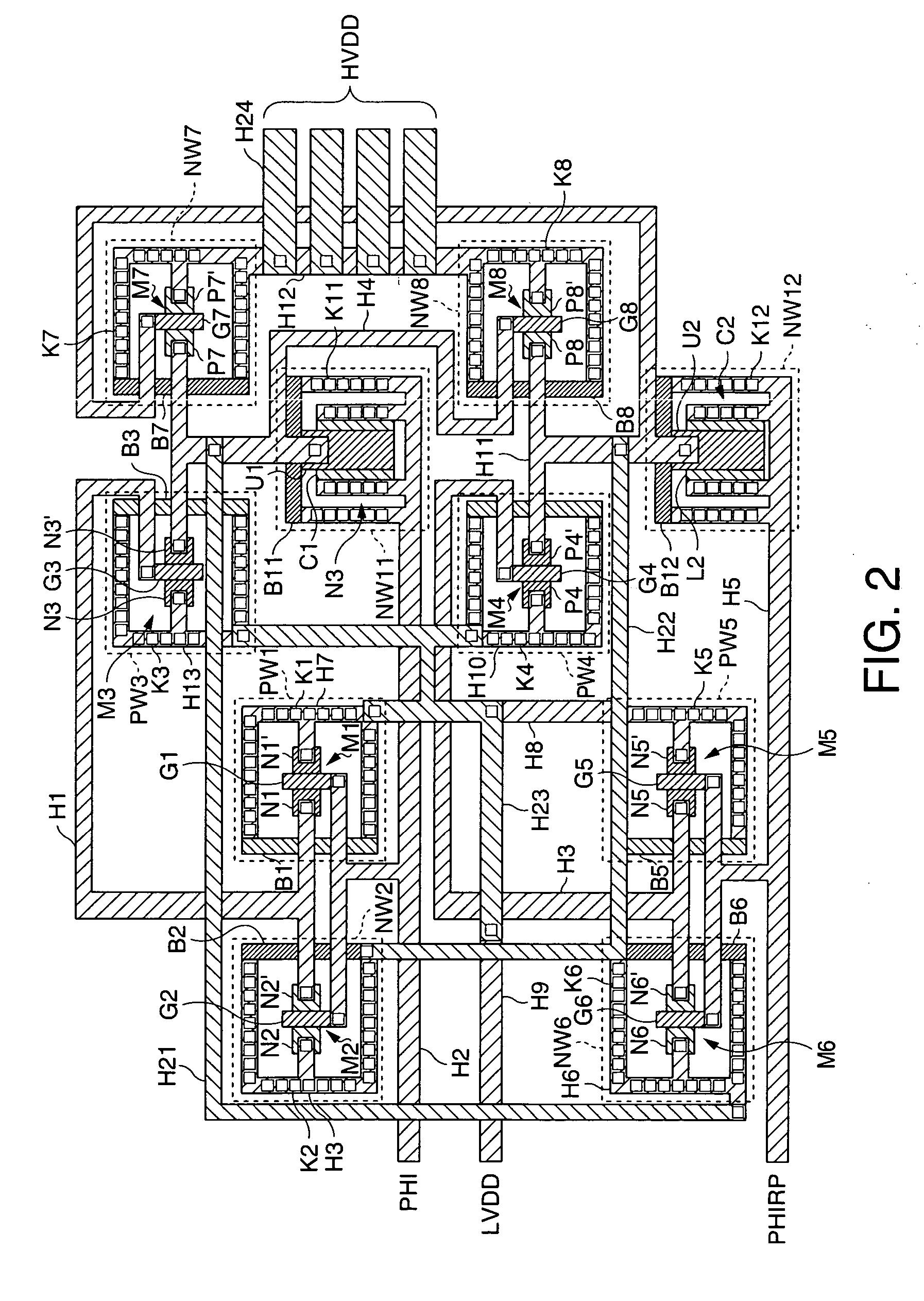Semiconductor device and boost circuit
a technology of a booster circuit and a semiconductor device, which is applied in the direction of pulse generators, pulse techniques, instruments, etc., can solve problems such as the degradation of conversion efficiency, and achieve the improvement of the mobility of field-effect transistors, the high breakdown voltage of transistors, and the conversion efficiency.
- Summary
- Abstract
- Description
- Claims
- Application Information
AI Technical Summary
Benefits of technology
Problems solved by technology
Method used
Image
Examples
first embodiment
[0025]FIG. 1 is a circuit diagram showing an example configuration of a booster circuit to which the invention is applied.
[0026] In FIG. 1, the source of an N-channel field-effect transistor M1 is coupled to an LDVV terminal; and the source of a P-channel field-effect transistor M2 is coupled to a VDDORP terminal. Further, the drain of the N-channel field-effect transistor M1 and the drain of the P-channel field-effect transistor M2 are coupled to a PHIA terminal. Furthermore, the gate of the N-channel field-effect transistor M1 and the gate of the P-channel field-effect transistor M2 are coupled to a PHI terminal. In the foregoing configuration, the substrate potential of the N-channel field-effect transistor M1 is coupled to the source of the N-channel field-effect transistor M1; and the substrate potential of the P-channel field-effect transistor M2 is coupled to the source of the P-channel field-effect transistor M2.
[0027] Also, the source of an N-channel field-effect transisto...
second embodiment
[0051]FIG. 5 is a diagram showing a method for warping a field-effect transistor according to the invention.
[0052] In FIG. 5, a field-effect transistor T has a gate electrode G, as well as a source layer S and a drain layer D, which sandwich the gate electrode G. Further, a source contact C1 and a drain contact C2 are respectively formed on the source layer S and the drain layer D. Furthermore, the field-effect transistor T is mounted on a film substrate F so that the channel direction of the field-effect transistor T accords with the warpage direction of the film substrate F.
[0053] In the above configuration, by warping the film substrate F, the channel region of the field-effect transistor T can be warped, which improves the mobility of the field-effect transistor T. Therefore, the transconductance of the field-effect transistor T can also be increased, which makes it possible to reduce the internal impedance of a charge-pump circuit even in the case of using a high-breakdown-vol...
PUM
 Login to View More
Login to View More Abstract
Description
Claims
Application Information
 Login to View More
Login to View More - R&D
- Intellectual Property
- Life Sciences
- Materials
- Tech Scout
- Unparalleled Data Quality
- Higher Quality Content
- 60% Fewer Hallucinations
Browse by: Latest US Patents, China's latest patents, Technical Efficacy Thesaurus, Application Domain, Technology Topic, Popular Technical Reports.
© 2025 PatSnap. All rights reserved.Legal|Privacy policy|Modern Slavery Act Transparency Statement|Sitemap|About US| Contact US: help@patsnap.com



